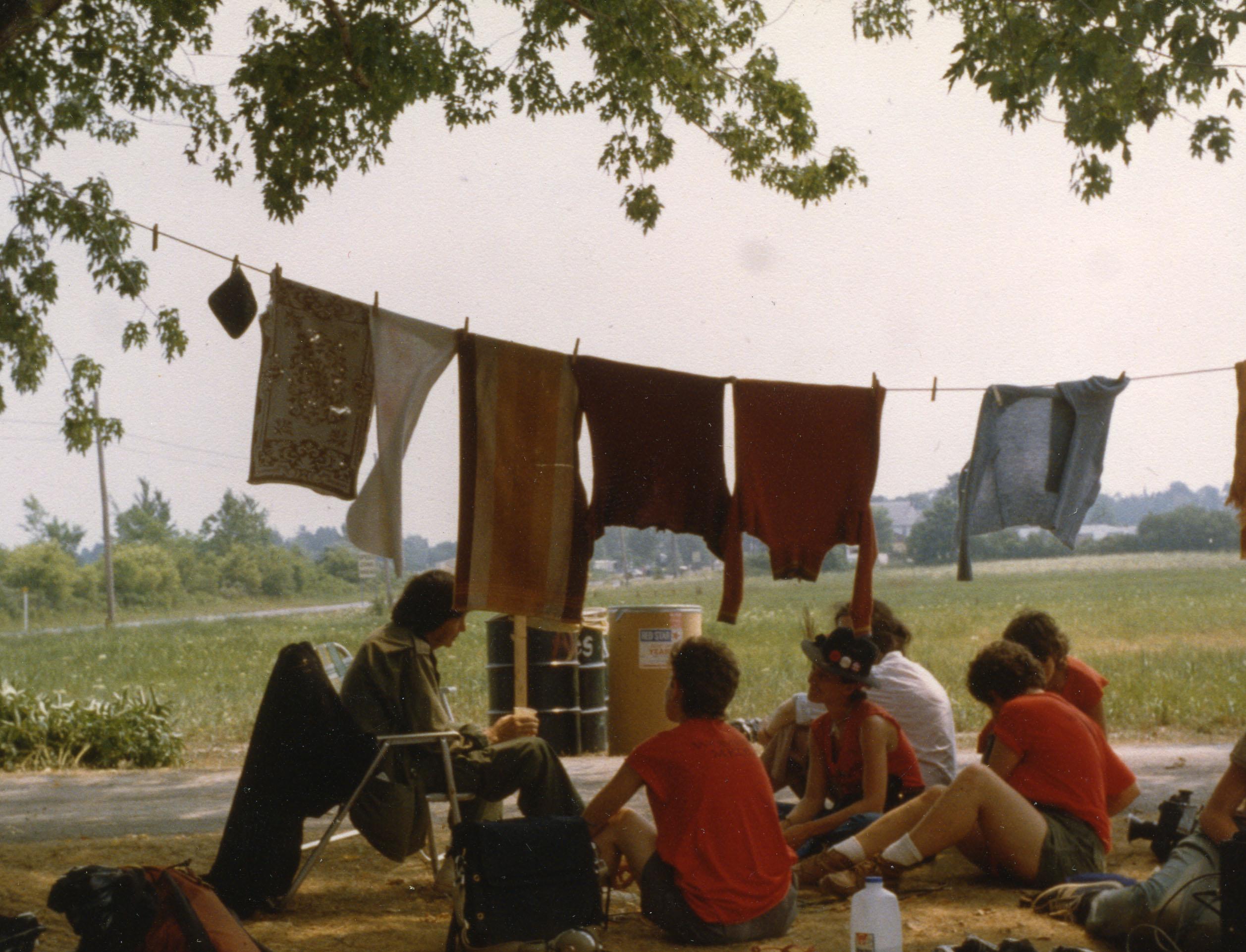Background on Seneca Women's Encampment for a Future of Peace and Justice

Inspired by the Peace Camps of Europe, the Women's Encampment for a Future of Peace and Justice originated at a conference on Global Feminism and Disarmament held on June 11, 1982 in New York City. The next month the Women's International League for Peace and Freedom coordinated a meeting with the Upstate Feminist Peace Alliance to discuss the possibility of initiating a peace camp at the Seneca Army Depot, a storage facility for nuclear weapons, as a demonstration of U.S. opposition to the deployment of nuclear missiles. The two groups agreed to move forward with the establishment of a peace camp and together with several other women's groups in upstate New York, New York City, and Boston, the Women's Encampment for a Future of Peace and Justice was formed.
The land for the campsite--a 53 acre farm in Varick, New York near the Seneca Army Depot--was purchased in May 1983 by Seneca Encampment, Inc., a non-profit group formed by several regional peace and feminist groups. The Encampment officially opened on July 4, 1983 and was attended by participants throughout the region and beyond; many of these participants had volunteered months in advance and were organized into various working committees. All who gathered were opposed to militarism, violence, and oppression, modeling their approach after the women's encampment at Greenham Common in England.
From the beginning the planning committee integrated educational events into the activities, which included outreach, leafletting, and opportunities for civil disobedience. Their aim was not only to build opposition to nuclear weapons, but to build connections between various women's groups, share skills, and foster community. By the summer of 1984, efforts to reach a wider audience included training on issues of non-violence and feminism, distribution of a newsletter called Jane Doe, and presentations about their mission to local audiences. These efforts were not always received as intended, however, and the Encampment continued to be unpopular within the larger conservative community of Romulus-Varick area.
During this time, the campground also underwent changes in order to become a legal, permanent site, including the installation of a new septic system and well, and water quality tests. Despite efforts to comply with all local and state regulations, area residents continued to object to the Encampment. Sensitive to their neighbor's concerns, the women instituted a new set of policies to govern behavior at the campground, including a ban on public nudity, vandalism, and alcohol and drug use.
To make matters worse, a series of newspaper articles entitled "Witches of Seneca" were published in November 1984 in the Syracuse Post-Standard by a journalist who had spent some time at the camp. These articles only served to reinforce the negative impressions locals had of the Encampment and renewed public objections to the site. By the following year, there were few women who lived on the campground, but their annual demonstrations still drew a large crowd of nearly 800 women. In the years that followed, however, the Encampment's activities decreased and by the summer of 1990 leaders organized a "transform or die" discussion about the future of the Women's Encampment for a Future of Peace and Justice. Out of these discussions came the establishment of a non-profit land trust called Women's Peace Land and an intentional community for women.

